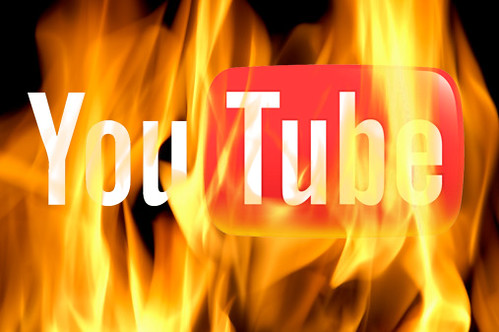10 Tips on How to Optimize your YouTube Video for SEO

April 29, 2023
Ranking your videos on YouTube can feel like an uphill battle, especially when only a select few influencers seem to have success on the platform. But don’t be discouraged — as a business, you can still achieve views, comments, and likes on your videos if you target the right audience with content that addresses their needs.
In fact, finding and engaging with the right audience is more important than creating a visually stunning video. By solving your potential customers’ problems with your YouTube content, you’ve already done most of the work towards optimizing for the platform.
Optimizing your YouTube videos is also a crucial component of your inbound marketing strategy, despite what you might think. A decade ago, inbound video marketing was a relatively new concept, and marketers had to learn to create high-quality content that was optimized for search engines.
Today, a well-rounded content strategy includes various types of media, from written blogs to podcasts to videos, and optimizing each for search is crucial. YouTube has become an increasingly vital platform for this purpose.
If you’re unsure where to start, don’t fret. Below, we’ve outlined the most important YouTube SEO tips to help you optimize your content and improve your rankings on the platform.
How to Optimize your YouTube SEO
1. Rename your video file with a keyword
Similar to optimizing written content, using an SEO tool is key to identifying the right keywords to focus on for your video. It’s essential to include your chosen keyword in your video file even before uploading it to YouTube. This is because YouTube cannot watch your video to determine its relevance to your target keyword.
Additionally, there are only a limited number of places where you can safely insert keywords on your video’s viewing page once it’s uploaded. But, YouTube can read your video’s file name and code when it’s uploaded. Therefore, replace your video’s “business_ad_003FINAL.mov” file name with your desired keyword, such as “house-painting-tips.” Make sure to include your preferred video file type, such as MOV, MP4, or WMV, which are compatible with YouTube.
2. Use your keyword in your video title
When searching for videos on YouTube, the first thing viewers notice is the title. That’s why it’s crucial to have a compelling, clear, and concise title that matches what the viewer is searching for. While using your target keyword in the title may help you rank for that term, it’s not always a strong ranking factor.
However, optimizing your title for your keyword can still be beneficial if it fits naturally into a descriptive title. Aim to keep your title under 60 characters to prevent it from getting cut off in results pages. Remember, your title is the first impression viewers have of your video, so make it count!
3. Enhance your video description
Let’s start with the basics: YouTube video descriptions have an official character limit of 1,000 characters, according to Google. However, keep in mind that viewers are here to watch a video, not read an essay, so try to be concise and focus on the most important information. YouTube displays only the first two to three lines of text (about 100 characters), so make sure to front-load your description with crucial details like CTAs and links.
To optimize your video, consider adding a transcript for viewers who watch without sound. While Backlinko’s research found no correlation between keyword-optimized descriptions and rankings, an optimized description can help you appear in the suggested videos sidebar, which is a significant source of views for most channels. So, it’s still worth putting effort into crafting an effective video description.
4. Use popular keywords’ tag that relate your topic
When optimizing your video for SEO, it’s important to use tags to both inform your viewers and help YouTube understand the content and context of your video. This can broaden your content’s reach by associating it with similar videos.
However, it’s crucial to choose your tags wisely and not use irrelevant ones just to get more views, as this can result in a penalty from Google. Make sure to include a good mix of common and long-tail keywords in your tags, with the most important ones listed first.
5. Categorize your video
After uploading a video, you can categorize it under “Advanced settings.” This helps to group your video with similar content on YouTube and reach more viewers who identify with your audience. However, it’s important to carefully consider which category each video belongs in. Ask yourself questions such as:
- Who are the top creators within the category? What are they known for and what do they do well?
- Are there any patterns between the audiences of similar channels within a given category?
- Do the videos within a similar category share qualities like production value, length, or format?
By analyzing these factors, you can determine the best category for your video, increasing the likelihood of it appearing in playlists and being recommended to potential viewers.
6. Upload a custom thumbnail image to link to the video result
Your video thumbnail is crucial for catching viewers’ attention as they scroll through search results. Along with the video’s title, the thumbnail sends a signal about the video’s content and can impact the number of clicks and views your video receives.
While you can use one of the thumbnail options automatically generated by YouTube, we highly recommend uploading a custom thumbnail. YouTube recommends images that are 1280×720 pixels with a 16:9 ratio and saved as .jpg, .gif, .bmp, or .png files that are 2MB or smaller. Following these guidelines can ensure that your thumbnail appears with high quality across multiple platforms.
Note that you need to verify your YouTube account to upload a custom thumbnail image. Visit the YouTube official verify web site and follow the instructions to complete the verification process.
7. Apply an SRT file to include closed captioning and subtitles
Subtitles and closed captions can significantly enhance YouTube SEO by highlighting essential keywords. To add subtitles or closed captions, you need to upload a transcript file or timed subtitles file. You can also enter transcript text directly, and it will auto-sync with your video.
Adding subtitles is similar, but you can limit the amount of text displayed. To add subtitles or closed captions, go to your video manager and select “Subtitles/CC” under the video you want to modify. Choose how you want to add subtitles or closed captioning from the options available.
8. Add cards and end screens to boost views of your YouTube channel
Cards and end screens can help you promote your brand and other videos on your channel, boosting your YouTube search optimization. Cards are preformatted notifications that appear on desktop and mobile, and you can add up to five cards to a single video. There are six types of cards, including:
- channel cards
- donation cards
- fan funding
- link cards
- poll cards
- video or playlist cards
You can add up to five cards to a single video.
End screens, on the other hand, are displayed at the end of a video and offer more visually detailed information. To add cards or end screens to your video, follow the official steps from Google or check out their guidelines for optimization. Remember that YouTube is always testing end screens to optimize the viewer experience, so there may be times when your designated end screen doesn’t appear.
Don’t let the complexity of these tools discourage you from optimizing your content for YouTube – with the increasing amount of time viewers spend watching YouTube on their TV, it’s important to make sure your videos are optimized for this platform.
9. Add hashtags that relate your topic
YouTube hashtags are a powerful tool for improving your video’s discoverability. Similar to other social media platforms, you can add related keywords to your content, which appear right above your video title. By using relevant hashtags, you increase the chances of being discovered by viewers who are interested in the topic.
It’s important to note that using too many hashtags can be seen as spammy, so stick to 2-3 that best describe your video. Also, include hashtags in your video description to further increase visibility. By following these best practices, you can effectively use hashtags to optimize your videos for search on YouTube.
10. Create a playlist about your video’s topic
To improve your YouTube rankings, create keyword-optimized playlists as you add more videos to your content library. This signals to YouTube what your videos are about and encourages viewers to click from video to video, boosting your view count.
If you are a gamer and dabble in different categories of gaming, divide your videos into different playlists. For example, comedian and youtuber Markiplier created a category called 3 scary games. Within it you will find gameplay videos of 3 horror games.
Conclusion
Optimizing your YouTube videos for search engines is a crucial component of any well-rounded content strategy. By following the tips outlined in this article, such as using targeted keywords, optimizing video titles and descriptions, and creating custom thumbnails, you can increase your chances of ranking higher in YouTube search results and reaching a wider audience.
But remember, the most important factor in your success on the platform is creating valuable and engaging content that solves your audience’s problems and meets their needs. With a combination of strong content and effective SEO, you can achieve success on YouTube as a business.








